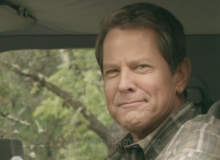Written for New Year’s Day. …
Excerpted from this longer version:
As one year ends and another begins, sometimes it’s best to focus neither on the frustrations of the old or the worries about the new, but instead on things that can be unifying and inspirational any year and anywhere. Perhaps by happenstance, that’s exactly what three stories did on a single page of the Dec. 28 New Orleans Advocate.
Together, the three stories remind us that we humans possess an apparently innate, apparently insatiable, and entirely wondrous compulsion to explore or to expand our limits or horizons.
Sometimes the mission is purely personal and even quirky; sometimes it is for a larger cause, even for the greater good of all mankind. Either way, there’s something admirable about the sheer pluck involved – and in some cases, something thoroughly ennobling.
The first story on page 8A of that day’s Advocate was headlined “Second man nears end of historic Antarctic solo trek.” It told of the two men, American Colin O’Brady and British trekker Louis Rudd, who hiked separately across the entire continent of Antarctica without aid of wind or re-supply. Others had died in prior attempts, but O’Brady accomplished the feat on Dec. 26 and Rudd finished on the 28th. (Both began their journeys on Nov. 3.)
As my colleague Erin Dunne wrote eloquently last week, O’Brady maintained a riveting account of his trip on Instagram – with its 126,000 followers demonstrating just how eagerly people still thrill to witness adventure that pushes beyond previous limits. If one man can achieve something, others believe they can follow – or at least believe that further advances await others, over whatever obstacles men try to overcome.

The second story was the quirky one: “Man tries to cross Atlantic in barrel.” Yeah, you read that right: A 71-year-old Frenchman (71!!) has set out on a 2,800-mile journey from the Canary Islands to the Caribbean in a plywood barrel, 10 feet by 7 feet, complete with a (very) tiny kitchen area. There are no steering mechanisms. Jean-Jacques Savin will rely on ocean currents alone to propel him across the sea.
And here I thought obsessions with crazy barrel tricks ended decades ago when people decided the Niagara Falls is better to look at than to crash down from. Me, I don’t quite see the attraction, or the point, in drifting in an overgrown keg for three months or more. (To be fair, Savin does say he’s trying to assist oceanographers in their study of Atlantic currents.) Still, to each his own adventure, and the very attempt to do something new and different is, if nothing else, a tribute to human imagination and ingenuity.
The third, and I think most important, story on the page was about NASA’s New Horizons spacecraft, which just after the New Year’s midnight (Eastern time) will reach within 2,200 miles of a tiny celestial body called Ultima Thule – the farthest-away world yet reached by a human-created object. Ultima Thule is a billion miles beyond semi-planet Pluto, an astonishing four billion miles from Earth. If all goes well, NASA will be broadcasting photos of the orbiting rock-ball before the end of New Year’s Day, while seven instruments on New Horizons amass scientific data.
Even 60 years after the space-race began, and even with space-film fantasies accustoming people to space-travel expectations far beyond current human capabilities, all of us who live in the real world should marvel at the New Horizons achievement. This little machine NASA sent into the heavens nearly 13 years ago, moving at a mind-boggling 31,500 miles per hour, can still respond to human command, compile data, and send us pictures from an object so small and far away we didn’t even know it existed until it was discovered by the massive Hubble Space Telescope – itself a technological tour de force – in 2014.
In other words, New Horizons already was eight years on its journey to Pluto before man even knew Ultima Thule existed, yet our remote-control engineers sitting in Cape Canaveral could alter our small ship’s path to pay the rock-ball a visit. As the Associated Press story in the Advocate explained, this fly-by will let mankind analyze “a preserved relic dating all the way back to our solar system’s origin 4.5 billion years ago.”
Stories like these teach us that the God-given mind and will of man can be glories to behold. Charles Krauthammer in 2000 wrote that humanity always should be able to say we “retained our nerve and hunger for horizons, and embraced our destiny.” Whether we do so as barrel riders, Antarctic marathoners, NASA spacecraft designers, or in whatever other unlikely quests we pursue, let us start every year with the insatiable quest to boldly go where no man… well, you know the rest. May we all be beamed up to a happy new year.






